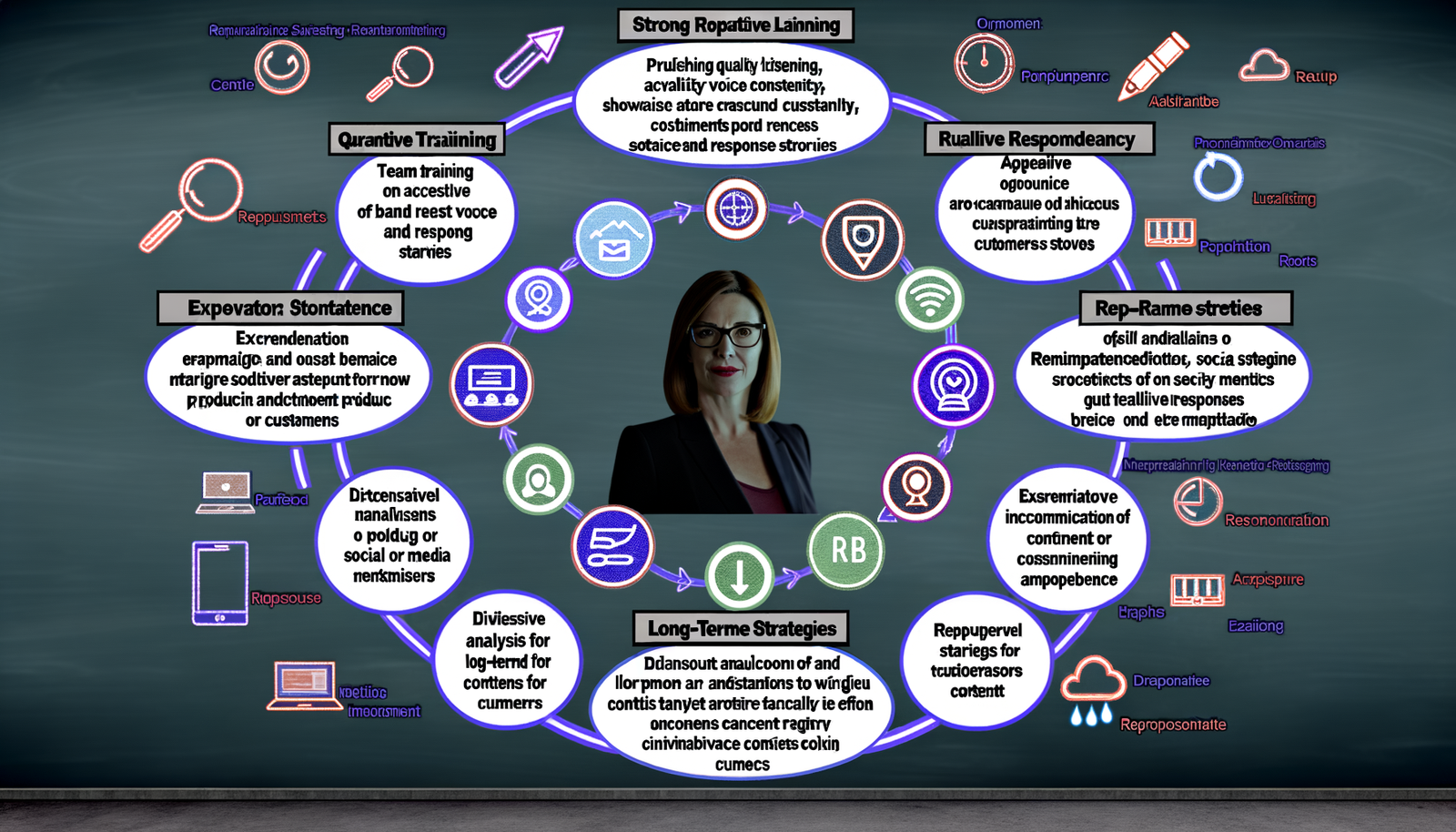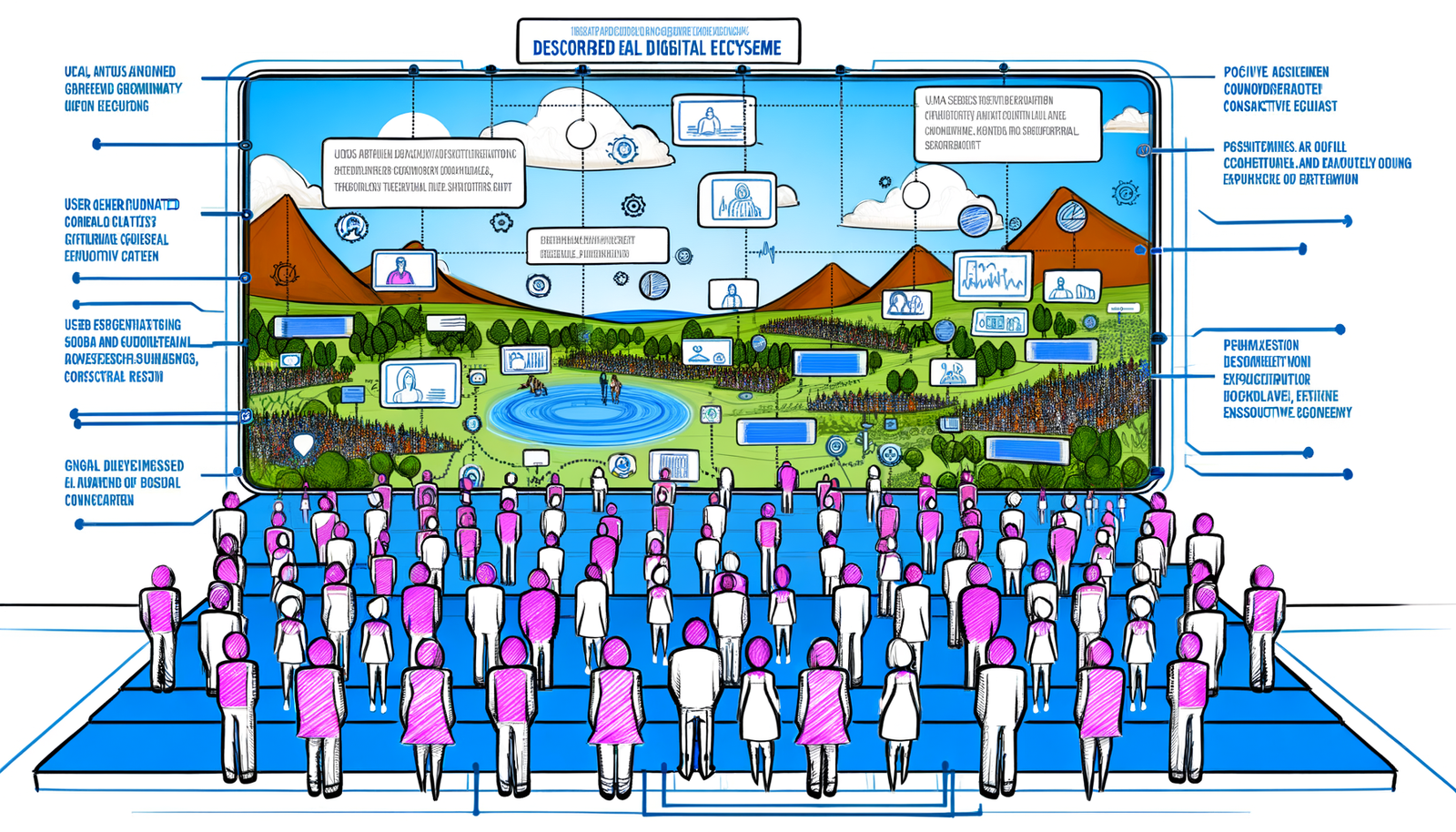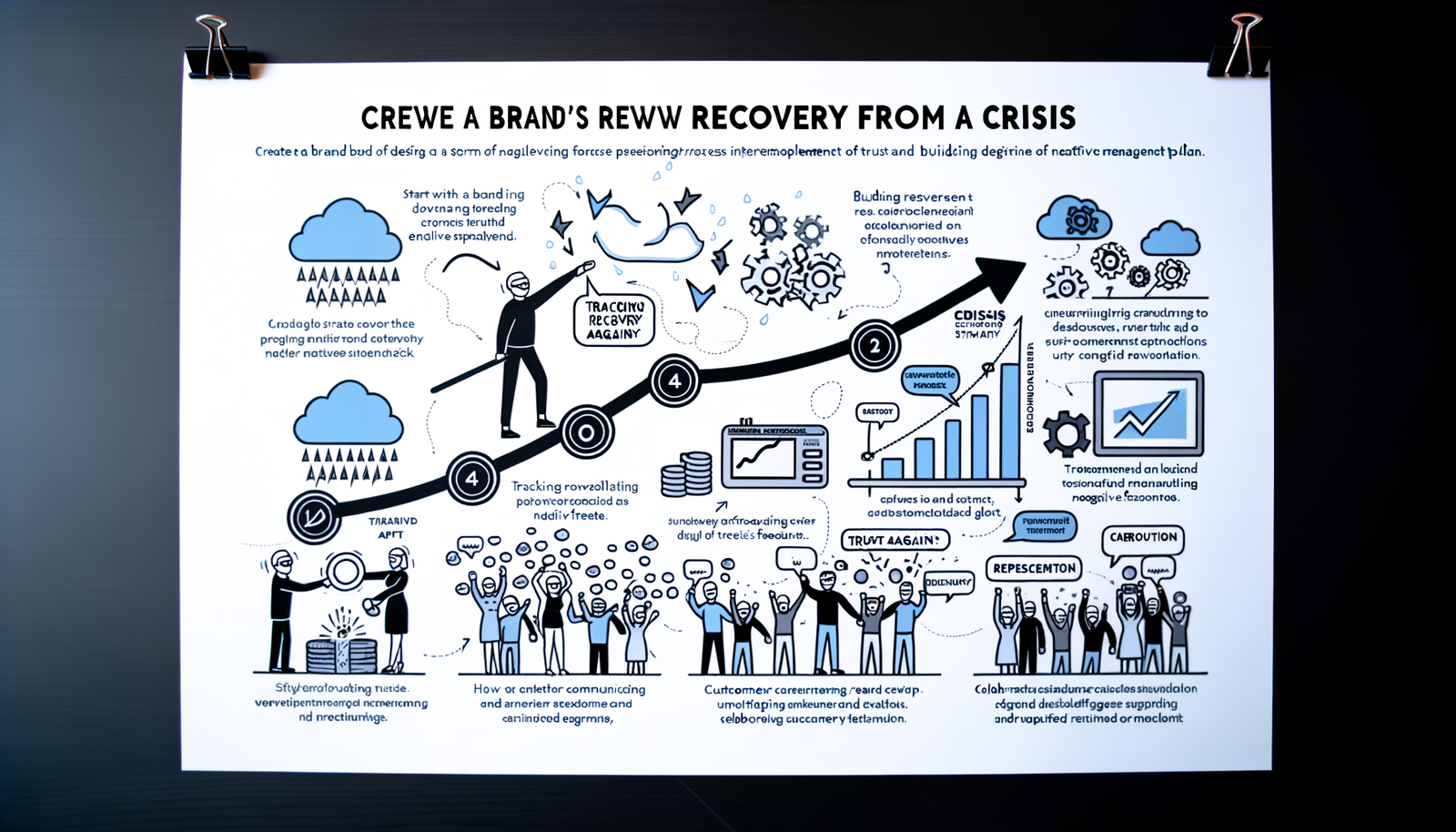
Understanding Negative Feedback
Negative feedback on social media can come in different forms and it is essential to differentiate between constructive criticism and comments that are meant to ‘troll’ or cause disruption. Constructive feedback, while perhaps presented in a less-than-positive light, can contain useful insights for improvement. On the other hand, trolling is usually intended to provoke or insult, with little room for productive engagement.
To effectively manage negative feedback, identifying the source is crucial. Whether the feedback is from a displeased customer, a competitor, or an internet troll will influence your course of action. Assessing the potential impact on your brand is equally important, as some comments may warrant a quick response, while others may have less immediate effect on your reputation.
Monitoring frequency and patterns of negative feedback is made easier with tools like RePurpose.io. Keeping track of the regularity and nature of such comments helps in preparing a more tailored and effective response. It also helps in identifying any recurring issues that need attention.
Bearing in mind the psychological effects on those managing social media is important. Continuous exposure to negative comments can be draining, and companies should support their social media managers through training, clear guidelines, and constructive coping mechanisms.
Recognizing the value hidden in negative feedback can transform a potentially damaging situation into an opportunity for brand improvement and growth. With a responsive, empathetic, and proactive strategy, businesses can navigate the murky waters of social media negativity towards more constructive engagement.

Immediate Response Strategies
When faced with negative feedback on social media, time is of the essence. Acting quickly can help mitigate the damage, but knowing when and how to respond is key to maintaining your brand’s reputation.
The 24-Hour Rule
Implementing the 24-hour rule is a critical step in managing a negative comment or review. However, not all feedback requires an immediate response. If the feedback is highly inflammatory or if the comment appears during off-hours, it might be beneficial to wait until you can craft a thoughtful reply. This period allows for a strategic approach, preventing knee-jerk reactions which might exacerbate the situation.
Crafting a Measured and Empathetic Initial Response
A well-balanced initial response should be both measured and empathetic. Acknowledge the person’s concerns and express your brand’s commitment to customer satisfaction. Accessibility in language and responsiveness in addressing the issue head-on communicate that your brand values feedback and is prepared to make the customer’s experience better.
RePurpose.io is an invaluable tool for managing multiple social media accounts. It helps you to oversee and streamline communication, ensuring a consistent voice across all platforms.
Active Listening and Acknowledging the Issue
Active listening is fundamental in understanding the root of the customer’s discontent. Engage with the customer by asking clarifying questions if necessary, showing that you value their input and are taking the necessary steps to address the issue.
Public vs. Private Resolutions
Deciding whether to resolve an issue publicly or take it to a private channel like direct messaging depends on the nature of the complaint. Public resolutions can showcase your brand’s dedication to customer service but remember to protect customer privacy at all times. For complex or sensitive situations, moving the conversation offline is often the best practice.
- Transparent Resolution: For clear-cut issues that have straightforward solutions, resolving it publicly can enhance trust among other customers who observe the interaction.
- Offline Discussion: If personal information is needed or the situation requires a lengthy dialogue, suggest a private conversation through direct messaging.
Key Takeaways for Immediate Responses
- Implementing the 24-hour rule for complex issues helps in crafting a deliberate response.
- A measured and empathetic initial reply sets the tone for constructive dialogue.
- Using tools like RePurpose.io can help manage and synchronize responses across various social media platforms.
- Active listening validates the customer’s concerns and aids in identifying a suitable resolution path.
- Choose public or private resolutions based on the nature of the feedback and privacy considerations.
In conclusion, addressing negative feedback promptly, with a crafted response, listening actively, and choosing the appropriate platform for resolution, your brand can turn potentially damaging situations into opportunities for growth and improved customer relations.

Long-Term Solutions & Prevention
While immediate response strategies are critical for mitigating the effects of negative social media feedback, developing long-term solutions and preventative measures is equally vital for maintaining a healthy online reputation. Adopting a holistic approach not only helps in crisis situations but also strengthens your brand’s resilience against future issues.
Develop a Crisis Communication Plan
A comprehensive crisis communication plan provides a clear pathway for your team to follow when responding to negative feedback or a full-blown crisis. An effective plan outlines:
- The specific roles and responsibilities for each team member during a crisis.
- A chain of command for decision-making and approval processes.
- Templates for public statements or responses to help maintain a consistent voice and brand message.
- Protocols for monitoring and assessing the situation as it evolves.
Training Your Team on Response Protocols
Your team should be well versed in responding to criticism online. Training sessions should focus on:
- Active listening: Understanding the underlying issues behind negative feedback.
- Brand voice consistency: Keeping communications in line with your brand’s voice and values.
- Response accuracy: Verifying information before it’s shared publicly to avoid misinformation.
Building a Positive Online Presence
Investing in building a positive online presence can dilute the impact of negative feedback. This can involve:
- Regularly publishing high-quality content that reflects your brand’s mission and values.
- Engaging with your audience in meaningful ways to foster a loyal community.
- Highlighting customer success stories and testimonials.
Using RePurpose.io, you can easily repurpose your best content across various platforms to maximize visibility and engage with a wider audience.
Proactive Customer Service on Social Media
Don’t wait for a crisis to engage with customers. Proactive customer service includes:
- Regularly monitoring social media channels for any mentions or discussions about your brand.
- Responding to queries and comments in a timely manner.
- Offering solutions before customers resort to posting negative feedback.
Learning from Feedback
Negative feedback isn’t just a problem to be managed—it’s an opportunity to improve. Learning from criticism involves:
- Analyzing feedback for valid points of improvement.
- Adapting products and services based on customer insights.
- Ensuring that changes in response to feedback are communicated back to the customers.
In conclusion, the implementation of these long-term strategies should be a significant part of your social media management efforts. By preparing a solid crisis communication plan, training your team, focusing on building a positive online identity, offering preemptive customer service, and taking lessons from the feedback received, your brand can come out stronger, more credible, and more customer-centric.

Engaging with the Community Positively
When faced with negative feedback on social media, one powerful strategy in reshaping public perception is to highlight the positive interactions and customer experiences. A focus on fostering positive community engagement can significantly counteract the sting of criticism and help build a platform of brand advocates.
Leveraging Positive Feedback and Testimonials
Begin by showcasing positive customer feedback and glowing testimonials. Feature these endorsements prominently on your social media channels to spotlight the satisfaction of your clientele. These endorsements serve as a natural counterbalance to negative comments and bolster your online reputation.
Encouraging User-Generated Content to Shift the Narrative
User-generated content is an authentic way to organically build your brand’s image. Encourage satisfied customers to share their experiences through stories, images, or reviews. Such content adds a layer of trust and relatability that can offset negative feedback while strengthening community bonds.
Community Management Best Practices
Community management is key to maintaining a healthy digital ecosystem. To navigate interactions diplomatically, establish a consistent and respectful tone in conversations. Remain attentive and responsive to inquiries and comments, showing that you value your community’s input and presence.
- Monitor your social media platforms regularly to identify opportunities for engagement.
- Respond promptly to comments and messages to keep the conversation flowing.
- Implement clear guidelines to foster a respectful and constructive community environment.
Hosting Q&A Sessions to Address Concerns Directly
Transparency can significantly ease concerns and misinterpretations. Hosting Q&A sessions, whether live on social media or through structured Q&A posts, can give your audience direct access to information and the sense that their voices are heard and valued.
RePurpose.io’s Role in Content Curation
Critical in the process of engaging your audience is the ability to provide them with timely, relevant content. RePurpose.io assists in curating and scheduling this content efficiently. It allows you to share positive stories, testimonials, and user-generated content across multiple channels, simplifying the task of story amplification.
Moreover, using tools like RePurpose.io, you can highlight positive aspects of your brand, curate a positive discussion and maintain the focus on the constructive side of your brand narrative. It’s about creating an environment that values customer experiences and showcases the human side of your brand, encouraging loyalty and advocacy.
In conclusion, don’t let negative feedback define your social media presence. Instead, use it as a springboard to reinforce the positive elements of your brand. This chapter highlights the importance of engaging with your community positively and proactively shaping the narrative with the support of innovative tools like RePurpose.io. By leveraging the power of positive feedback, embracing user-generated content, practicing engaged community management, hosting direct Q&A sessions, and expertly curating content, you can make significant strides in not only managing negative feedback but also in building a resilient and thriving social media community.

Legal Considerations & Boundaries
Navigating the treacherous waters of social media requires not only emotional intelligence and strategic planning but also a keen awareness of legal considerations. Negative feedback can sometimes cross the line into defamation, negatively affecting your brand’s reputation.
Understanding the Legal Landscape
Defamation and slander on social media can be complex, but understanding these concepts is crucial. Defamation is a statement that injures a third party’s reputation, while slander refers to spoken defamation. On social media, such cases could involve false reviews or malicious rumors.
Tip: Always document instances that could be legally dubious; preserving evidence is key.
Setting Clear User Policies
Setting clear policies on your social platforms can help in establishing boundaries. These policies should outline acceptable behavior and the consequences of violations, serving as a deterrent to potential offenders.
- Include language that addresses hate speech, abuse, and misinformation.
- Communicate these policies regularly to your audience.
- Ensure fairness and consistency in enforcement.
Seeking Legal Council
Knowing when to seek legal advice is crucial, especially in situations where the feedback might have legal ramifications. An attorney specializing in internet law can provide guidance on the best course of action.
- Seek legal counsel if the negative feedback includes false information that could damage your brand’s reputation.
- Consider consulting a lawyer before responding publicly to ensure your response doesn’t inadvertently escalate the situation.
Maintaining Professionalism
No matter how heated situations may get, always maintain professionalism. Responding in kind to insults or accusations can harm your brand’s image more than the original feedback.
- Take the higher ground, even when provoked.
- Allow your response to reflect the values and character of your brand.
- Keep responses factual and avoid emotional language.
Brand Image Protection within Legal Constraints
While addressing the negative feedback, ensure you do not infringe on anyone’s rights. Your responses should be respectful of individual privacy and adhere to the laws governing online communication.
Remember: A strategic response is not only about defusing the current situation but also about protecting your brand legally and ethically. In this regard, RePurpose.io can assist in managing and monitoring your online engagements, ensuring they stay within the bounds of your brand’s legal policies.
Actionable Advice
Be proactive in understanding the legalities involved in social media interactions:
- Regularly consult with legal experts to stay abreast of changes in online communication laws.
- Train your team on recognizing legally sensitive matters and the correct protocols in handling them.
- Empower your team with tools like RePurpose.io to help manage communication efficiently and within policy guidelines.
- Always err on the side of caution when dealing with potentially defamatory statements.
In conclusion, navigating negative feedback on social media is more than just managing your brand’s perception—it’s also about understanding and adhering to legal boundaries to safeguard your brand. By staying informed, setting clear policies, seeking professional advice when necessary, and maintaining professionalism at all times, you can ensure that you protect your organization’s image while engaging with your audience responsibly.

Tracking Recovery and Building Resilience
After addressing negative feedback and implementing a coherent crisis strategy, it is vital to track the recovery process and fortify your brand’s resilience. With adept monitoring tools such as RePurpose.io, you can gauge the public sentiment and measure the effectiveness of your recovery efforts. Recognizing the signs of brand recovery is key to understanding which tactics are working and where there’s room for improvement.
Measuring Sentiment Analysis Post-Crisis
Implementing sentiment analysis is an essential step for evaluating the emotional tone behind social media mentions and conversations. Tools provided by RePurpose.io can assist in tracking whether the sentiment around your brand is improving. Such data allows for an objective assessment of the crisis impact and the subsequent recovery phase.
- Positive Shift: Look for an increase in positive mentions and a decline in negative sentiment.
- Engagement Levels: Review if engagement levels are returning to or surpassing pre-crisis numbers.
- Brand Advocacy: Monitor for signs of customers defending and supporting your brand.
Recognizing Signs of Brand Recovery
Signs of recovery might include an uptrend in brand engagement, a decrease in negative feedback, or customers openly expressing their renewed trust in your brand. This is the phase where you analyze customer interactions and feedback to ensure your response has effectively mitigated the crisis.
Conducting surveys and encouraging feedback can further inform you about how your audience perceives your brand post-crisis. Recovery is not just about returning to the status quo; it’s about showing that you’ve listened, learned, and improved.
Building Back Better: Incorporating Feedback Into Strategy
True resilience is shown when a brand takes the lessons learned from a crisis and uses them to strengthen their strategy. This includes revisiting your crisis management plan with fresh insights and incorporating customer feedback into product or service development. Rebuilding trust is paramount, and brands that demonstrate adaptability and a commitment to improvement can turn a negative situation into an opportunity for growth.
Celebrating Wins: Sharing Recovery Stories on Social Media
Positive narratives play an important role in reinforcing your brand’s recovery. Sharing success stories, customer testimonials, or highlighting how feedback has led to tangible changes can inspire confidence and loyalty. Social media is not just a platform for managing crises but also for broadcasting your brand’s resilience and dedication to customer satisfaction.
Future-Proofing Against Negative Feedback Through Regular Audits
RePurpose.io, your brand can monitor recovery in real-time, celebrate its wins, and lay a foundation for enduring brand loyalty.

